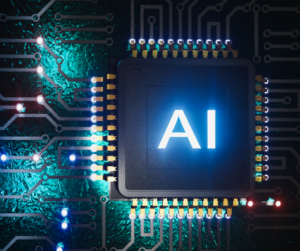The Future of Technology in Human Services
Trends to Watch in 2025
After years of working with human service organizations, I’ve seen firsthand how technology can both empower and challenge the way we support individuals and communities. From streamlining case management to enhancing accessibility, digital tools have already reshaped the field—but what comes next? In this blog, I’ll explore the future of technology in human services, examining the innovations that promise to improve efficiency, equity, and impact.
Human service organizations stand at a transformative crossroads where technology is reshaping how they operate, deliver services, and engage with clients. As we begin 2025, key trends in technology promise to enable greater efficiency, improved outcomes, and enhanced client experiences across the sector.

Artificial Intelligence (AI) and Predictive Analytics
AI and predictive analytics are rapidly becoming essential tools in human services, offering the ability to analyze historical and real-time data to better understand and meet client needs. These technologies enable organizations to anticipate challenges, allocate resources more effectively, and personalize service delivery.
Example Use Cases:
- Identifying at-risk populations to intervene before issues escalate.
- Streamlining case management with automated next-step recommendations.
- Creating predictive models to personalize services based on individual client needs.

Looking ahead, AI will evolve from automating routine tasks to offering actionable insights that drive decision-making and program innovation, ultimately improving outcomes for clients and communities.
Enhanced Case Management Through Integrated Platforms
Integrated platforms are set to revolutionize case management in 2025 by consolidating data, streamlining workflows, and reducing administrative burdens. The era of siloed data systems is ending, replaced by solutions that provide a comprehensive view of client needs and agency resources.
Features to Watch:
- Tools that enable cross-agency collaboration for seamless coordination.
- Mobile-first designs that support fieldwork and remote service delivery.
- Integration with healthcare, education, and other external systems to provide holistic support.
These platforms empower human service workers with the tools to manage cases efficiently and enhance the quality of care delivered.
Cloud-Based Solutions for Scalability and Collaboration
Cloud technology is transforming the scalability and flexibility of human service organizations. Cloud-based systems allow agencies to expand their operations as needed, without requiring significant upfront investments in IT infrastructure.
Key Benefits:
- Improved data security and compliance with regulations like HIPAA.
- Remote access for teams in the field or working across distributed locations.
- Lower IT maintenance costs, enabling agencies to allocate funds to direct services.
Future Outlook: Cloud platforms will continue to advance, incorporating features like robust disaster recovery options and enhanced compliance tools to address the unique needs of the sector.

As technology continues to evolve, human service organizations must embrace these innovations to stay ahead. From AI-driven insights to integrated platforms and scalable cloud solutions, the trends shaping 2025 will redefine how services are delivered and how clients are supported. By adopting these technologies, agencies can enhance efficiency, improve outcomes, and empower their workforce, ensuring they are well-equipped to meet the complex challenges of the future. The future of human services is not just about leveraging technology—it’s about creating systems that enable greater impact, equity, and support for the communities they serve.

